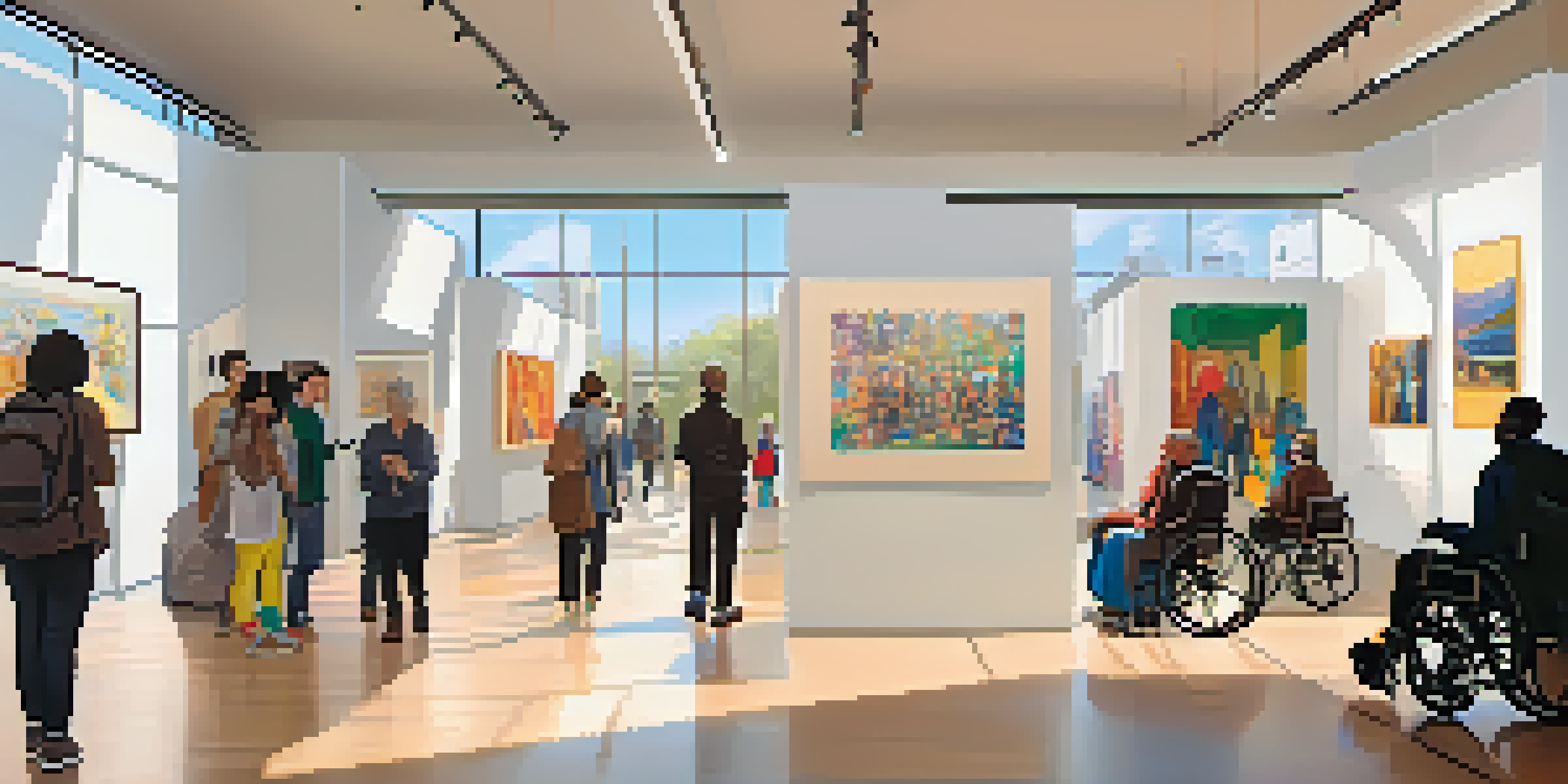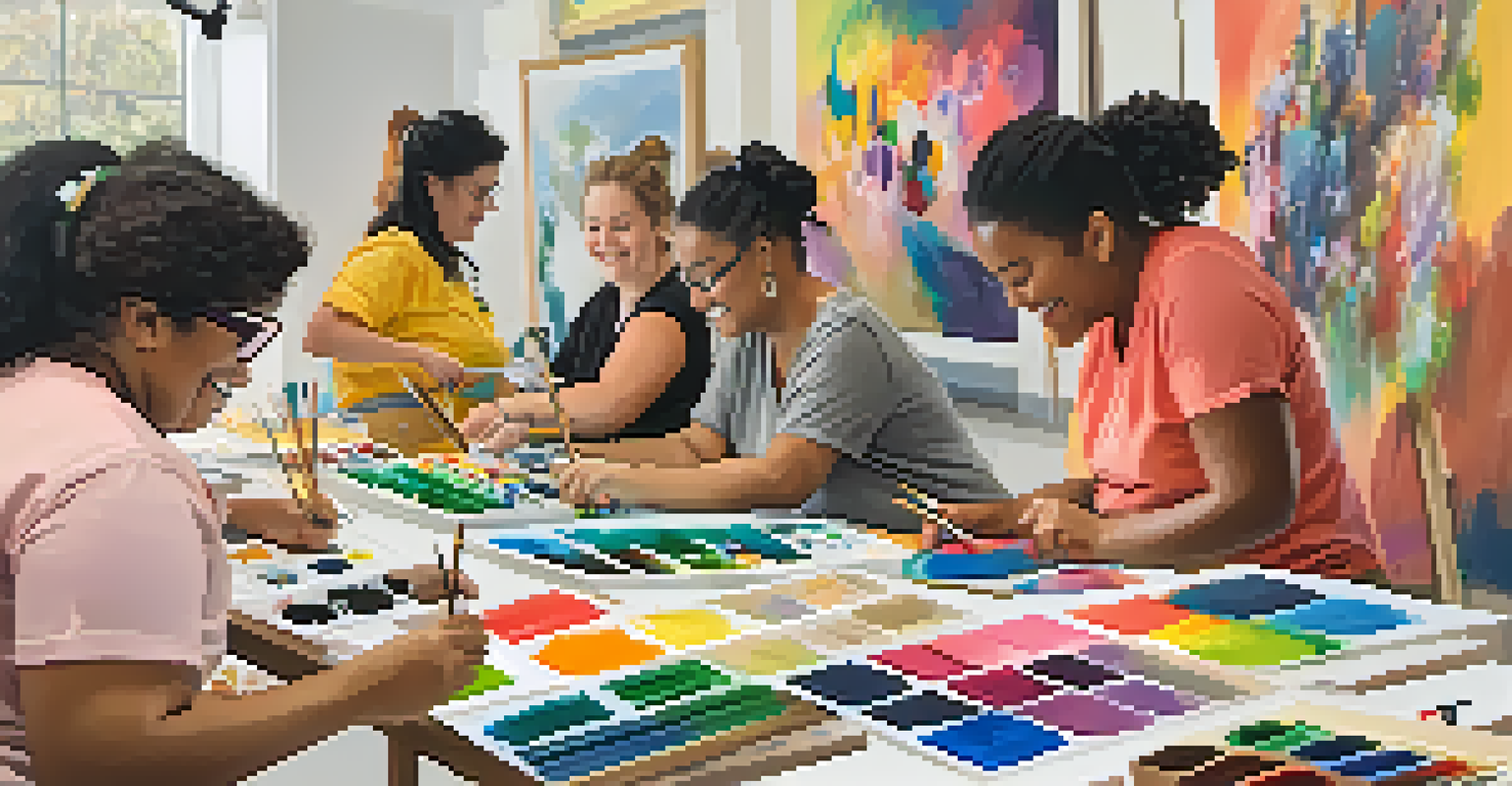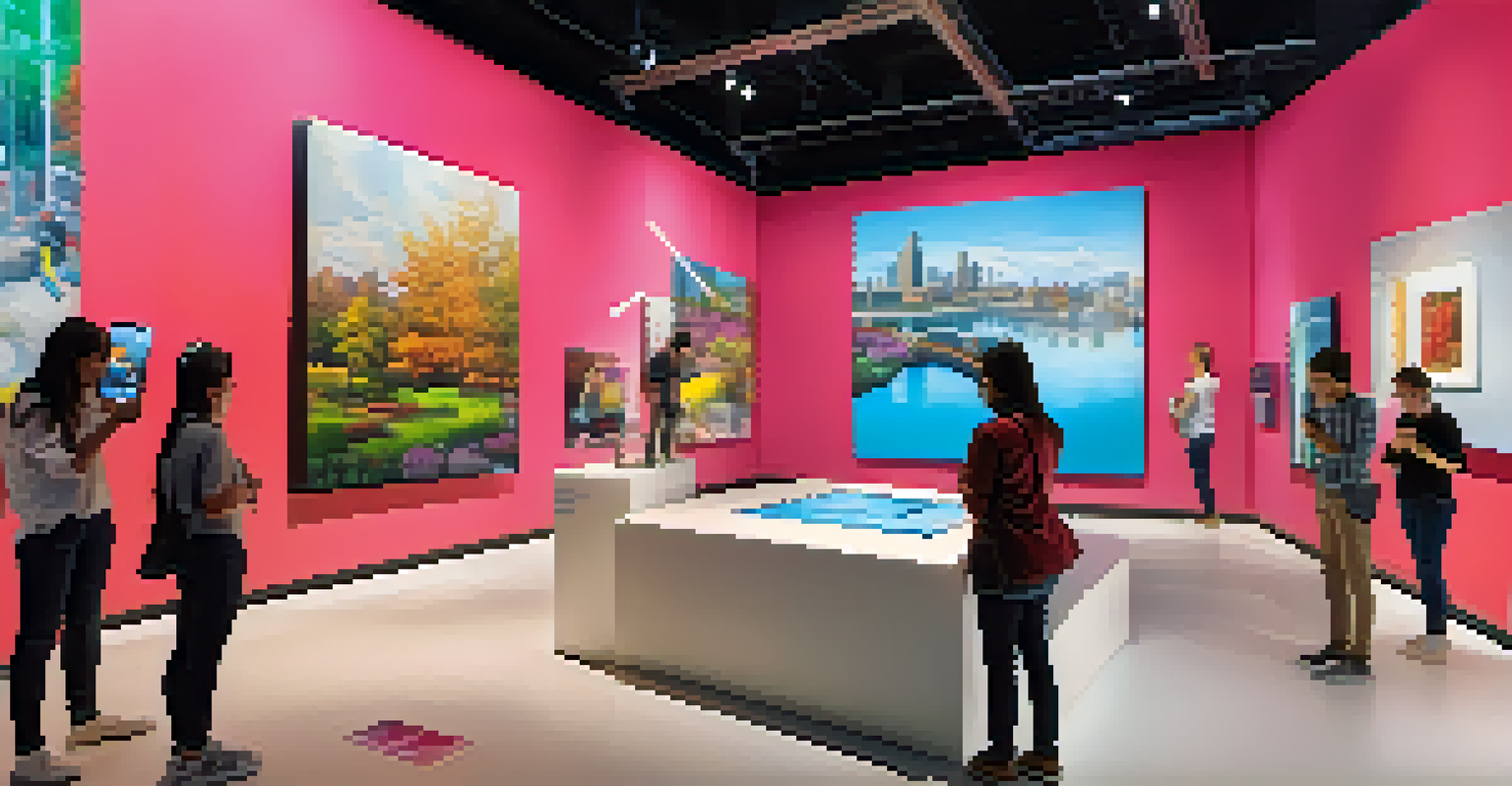The Business Case for Accessibility in Art Institutions

Understanding Accessibility in Art Institutions
Accessibility in art institutions means ensuring that everyone, regardless of their physical or cognitive abilities, can enjoy and engage with art. This includes making buildings wheelchair accessible, providing audio guides for the visually impaired, and offering sensory-friendly experiences. By prioritizing accessibility, institutions not only comply with legal standards but also enrich the cultural landscape for all audiences.
Art is not what you see, but what you make others see.
Art is a universal language, and when barriers exist, they limit the conversation. Imagine a visually impaired individual missing out on the vibrant colors of a painting; their experience is diminished. Accessibility helps bridge these gaps, allowing a wider audience to appreciate and interpret art in their own unique ways.
Furthermore, accessibility isn't just about physical adjustments; it also encompasses digital access. Websites and online exhibitions should be designed with inclusivity in mind, ensuring that everyone can engage with art, whether in person or online. This holistic approach to accessibility sets the foundation for a more inclusive art world.
The Economic Benefits of Accessibility
Investing in accessibility can yield significant economic returns for art institutions. By making spaces more accessible, institutions can attract a broader audience, including individuals with disabilities and their families. This not only increases ticket sales but also enhances community engagement and support, as more people feel invited to participate.

Consider the example of a museum that introduces sensory-friendly hours. This initiative not only attracts families with children on the autism spectrum but also encourages repeat visits. When more individuals feel comfortable and welcomed, institutions can build a loyal customer base, leading to increased revenue over time.
Accessibility Enhances Art Engagement
Ensuring art institutions are accessible allows everyone, regardless of their abilities, to fully engage with and enjoy art.
Moreover, accessible art spaces often receive positive media attention, enhancing their reputation and visibility. This can lead to more partnerships, sponsorships, and funding opportunities, creating a cycle of growth and investment back into the institution.
Legal Compliance and Ethical Responsibility
Accessibility is not just a nice-to-have; it's a legal requirement in many regions. Institutions must comply with laws like the Americans with Disabilities Act (ADA) in the U.S., which outlines specific accessibility standards. Failing to meet these regulations can result in legal ramifications, including fines and lawsuits.
Inclusion is not a matter of political correctness. It is the key to growth.
Beyond legal compliance, there's an ethical obligation for art institutions to serve all members of the community. By providing access to everyone, institutions demonstrate their commitment to inclusivity and social responsibility. This ethical stance can enhance public perception and foster goodwill within the community.
In essence, prioritizing accessibility reflects an institution's values and dedication to cultural equity. It's about more than just meeting legal standards; it's about creating a welcoming environment for all, where diverse voices and experiences are celebrated.
Enhancing Visitor Experience Through Inclusivity
Accessibility directly contributes to an enriched visitor experience. When art institutions cater to diverse needs, they create an environment where everyone can engage fully. For instance, providing sign language interpreters or guided tours tailored for individuals with cognitive disabilities can transform a visit into an unforgettable experience.
Imagine visiting an art gallery where the staff are trained to understand and accommodate various accessibility needs. This level of consideration not only makes visitors feel valued but also encourages them to return and share their positive experiences with others. Word-of-mouth can be a powerful marketing tool.
Economic Gains from Inclusivity
Investing in accessibility not only attracts a broader audience but also fosters community support and increases revenue for art institutions.
Ultimately, enhancing visitor experience through inclusivity fosters a sense of belonging and community. When people see themselves represented in art spaces, they are more likely to connect with the artwork and the institution itself, creating lasting relationships.
Building Community Through Accessible Art Programming
Accessible art programming can play a crucial role in building community connections. Workshops designed for diverse groups, including those with disabilities, foster collaboration and creativity. These programs encourage participation from individuals who may have previously felt excluded from the art world.
For example, an art institution that offers adaptive art classes for individuals with disabilities not only provides artistic skills but also promotes social interaction. Participants can share their experiences and perspectives, enriching the community dialogue around art and accessibility.
By actively involving diverse audiences in programming, art institutions can become vibrant hubs of creativity and inclusivity. This sense of community can lead to increased attendance, support, and advocacy for the institution’s mission.
The Role of Technology in Accessibility
Technology plays a pivotal role in enhancing accessibility within art institutions. From virtual reality tours for the visually impaired to apps that provide audio descriptions of exhibits, innovations are continually expanding access. These tools can make art more approachable and engaging for a wider audience.
For instance, consider a museum that implements augmented reality (AR) to create interactive exhibits. Visitors can use their smartphones to access additional information about the artwork, making it easier to engage with the content. Such technological advancements not only enhance the visitor experience but also attract tech-savvy audiences.
Legal and Ethical Accessibility
Complying with accessibility laws is essential, while also demonstrating a commitment to inclusivity and social responsibility within the community.
As technology evolves, art institutions must stay informed and adaptable. By embracing new tools and solutions, they can ensure that accessibility remains a priority in their programming and outreach efforts, ultimately benefiting the entire community.
Creating a Culture of Inclusivity in the Art World
Creating a culture of inclusivity in the art world requires commitment and collaboration from all stakeholders. Art institutions can lead the way by implementing accessibility policies and training staff to understand and address the needs of diverse audiences. This cultural shift fosters an environment where inclusivity is prioritized.
Art institutions can also collaborate with local disability advocacy groups to gain insights and feedback on their accessibility efforts. Such partnerships can lead to more effective programs and initiatives, ensuring that the voices of individuals with disabilities are heard and valued.

Ultimately, fostering a culture of inclusivity not only enriches the art world but also reflects the diverse society we live in. When everyone feels represented and valued in art spaces, we move closer to a more equitable and vibrant cultural landscape.